Background:
As the development of the MGM7 intake continues it is useful to check the performance against popular commercial intakes.
Previous tests that have been performed were either with an inlet elbow or with the MGM7 intake attached directly to the flow bench. The second configuration, direct to the bench, omits the final ninety-degree bend that leads into the compressor cover, which is the turn that the inlet elbow provides.

Eliminating a ninety-degree bend from the intake path will increase the airflow rate through the intake. For relative measurements between development intakes, this omission of the final bend isn’t important.
Some larger turbochargers do away with the inlet elbow and use a silicone coupler to attach the intake to the turbocharger. One intake that supports this variation is the Blaze ATOM RACE V2 intake. Its turbo inlet flange is removed and the silicone hose is attached to the turbocharger.
Test Setup:
Presently I have a DBV2 intake on hand and this intake uses a 90-degree silicone coupler that transitions from 3.5″ to 3″. This presents a good opportunity to configure the Beta-2 intake with the DBV2 90-degree silicone elbow to obtain an airflow measurement representative of what the MGM7 Beta-2 intake could support with a larger turbocharger.
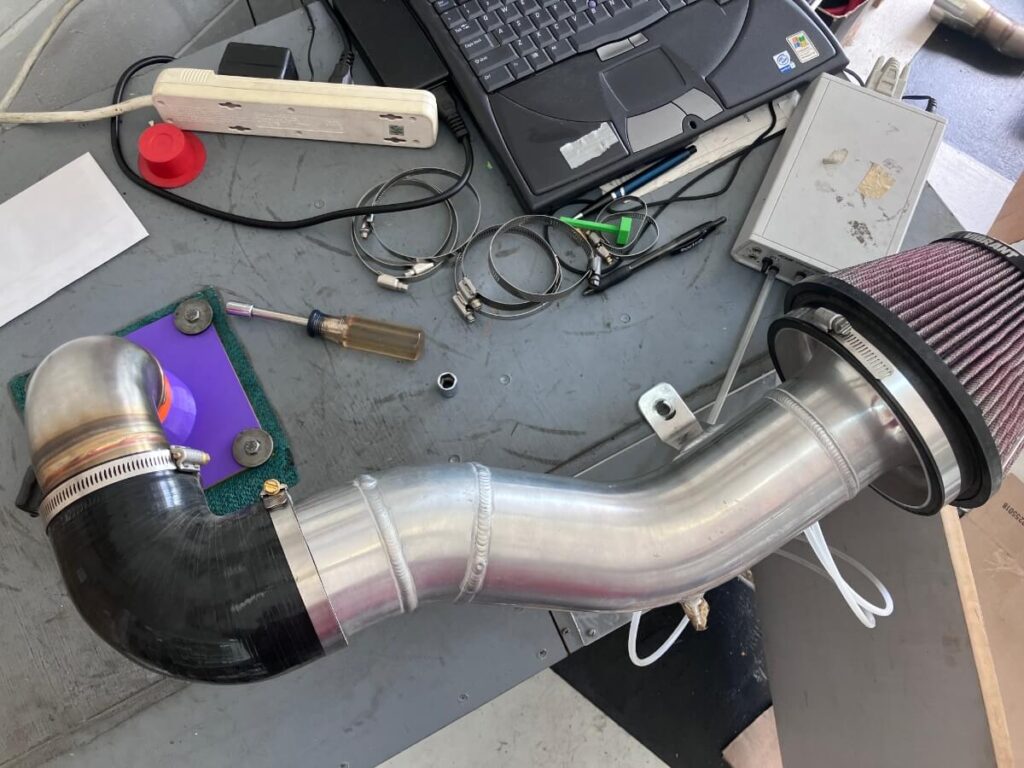
Note: If you’ve been following the posts where the development of the MGM7 intake has been discussed you may be wondering why I am using Beta-2 when Beta-5 supported a higher airflow rate. The Beta-5 outlet is 3″ and the Beta-2 uses a 3.5″ outlet. The DBV2 silicone elbow has a 3.5″ inlet and 3″ outlet, which works with Beta-2 but not Beta-5. I don’t have a 3″ in/out 90-degree silicone elbow, so I couldn’t use the Beta-5 intake.
The comparison product during this test is the Blaze ATOM Race V2 intake with the turbo inlet flange removed.
Each intake will be attached to the flow bench using a 3″ adapter.
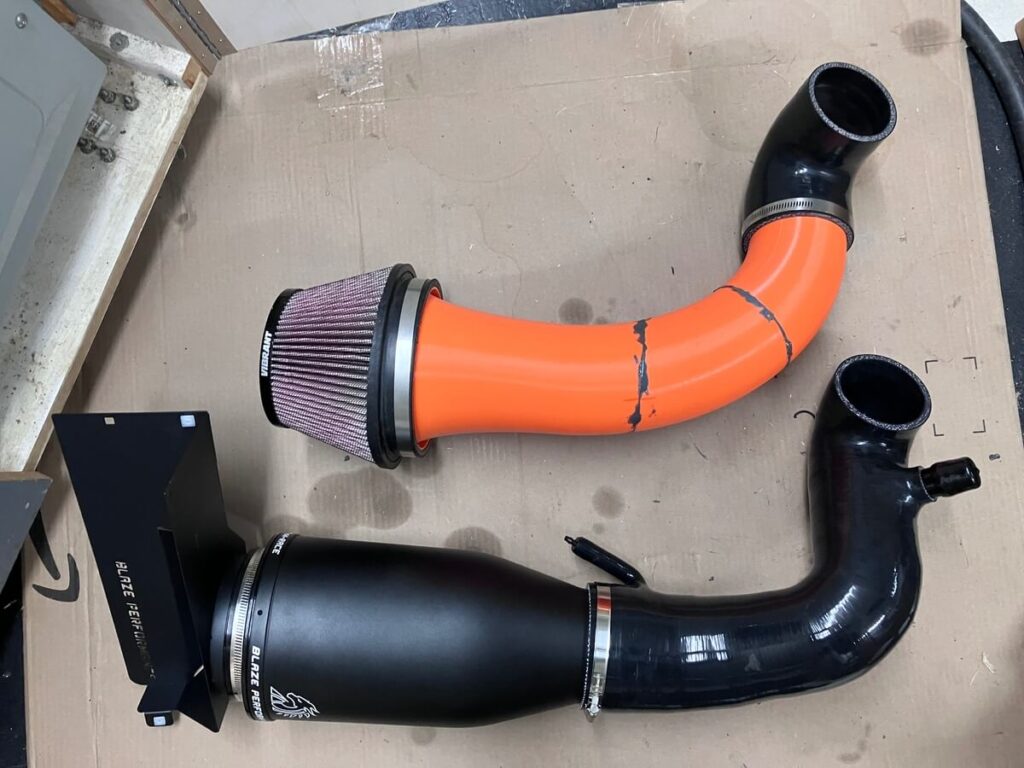
The flow bench will be set to a depression of 13″ of H2O and the airflow rate at that pressure will be recorded.
Test Results:
The MGM7 Beta-2 intake with DBV2 90-degree silicone elbow flows 560 CFM @ 13″ of H2O.

The Blaze ATOM RACE V2 was then attached to the bench and flowed 344 CFM @ 13″ of H2O.
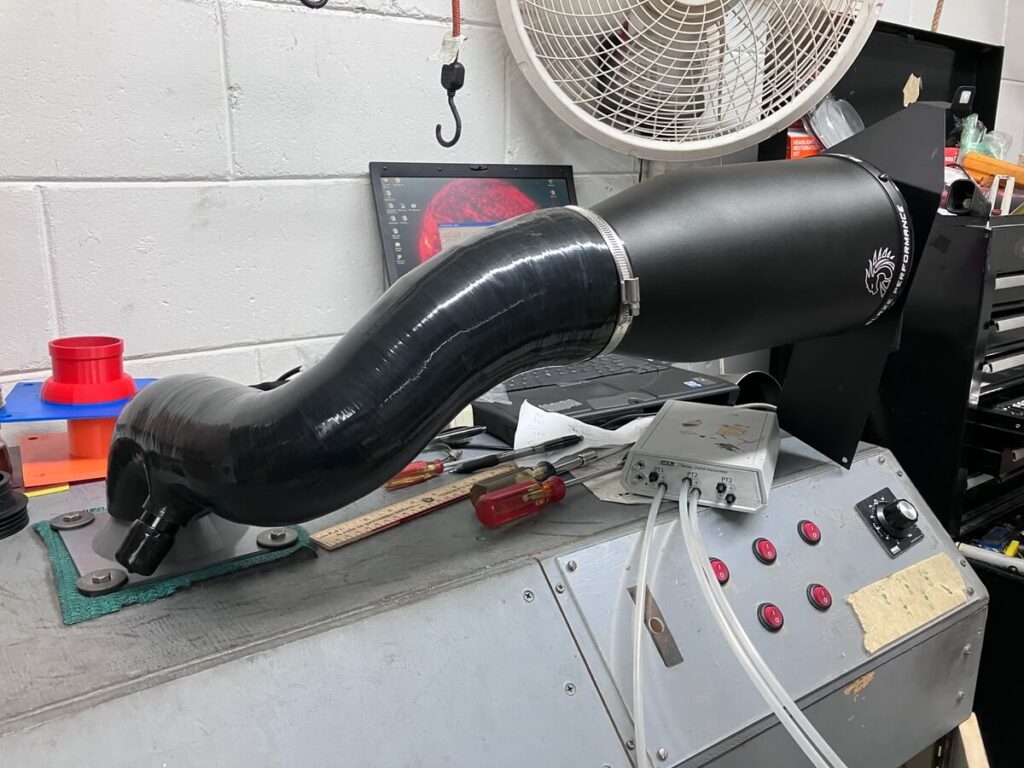
A chart comparing the flow rates for each intake in their configuration is shown below:
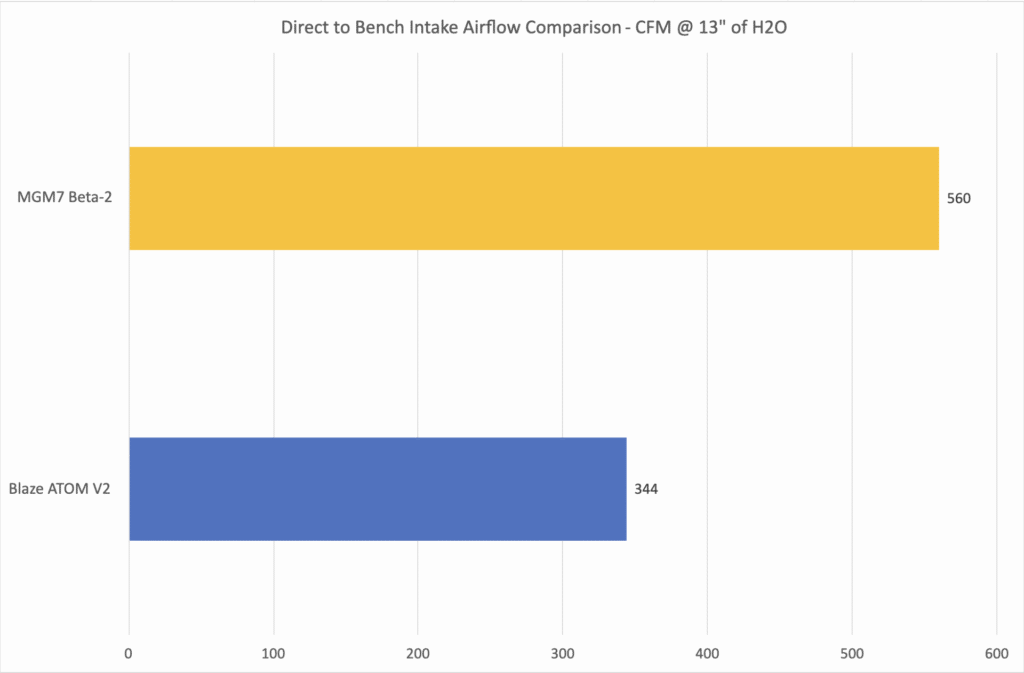
Results Discussion:
The MGM7 Beta-2 intake flowed a surprising amount more than the Blaze ATOM intake.
Looking at the two intake air filters side-by-side I suspect the speed of the air passing through the filtering material is slower with the Vibrant filter since it can draw air in from all around the filter. With the Blaze intake, all the air is channeled through the opening in the air duct. Slower airflow through the filtering material will reduce pressure loss across the filter.
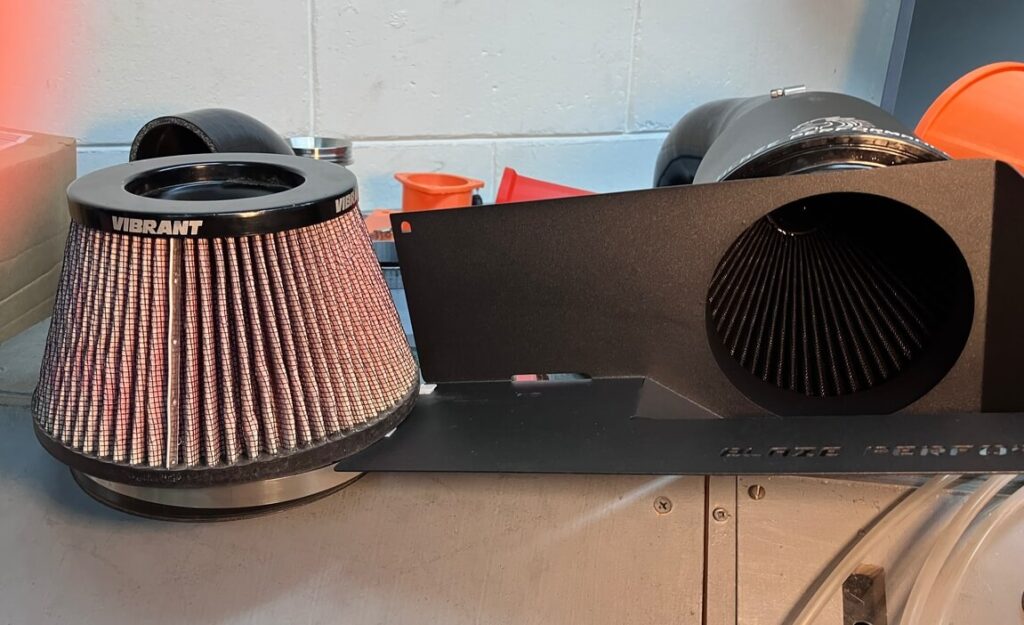
Another possible factor is the curvature of the path to the turbocharger. With the MGM7 intake, a priority has been placed on having gentle curves to the maximum extent possible.
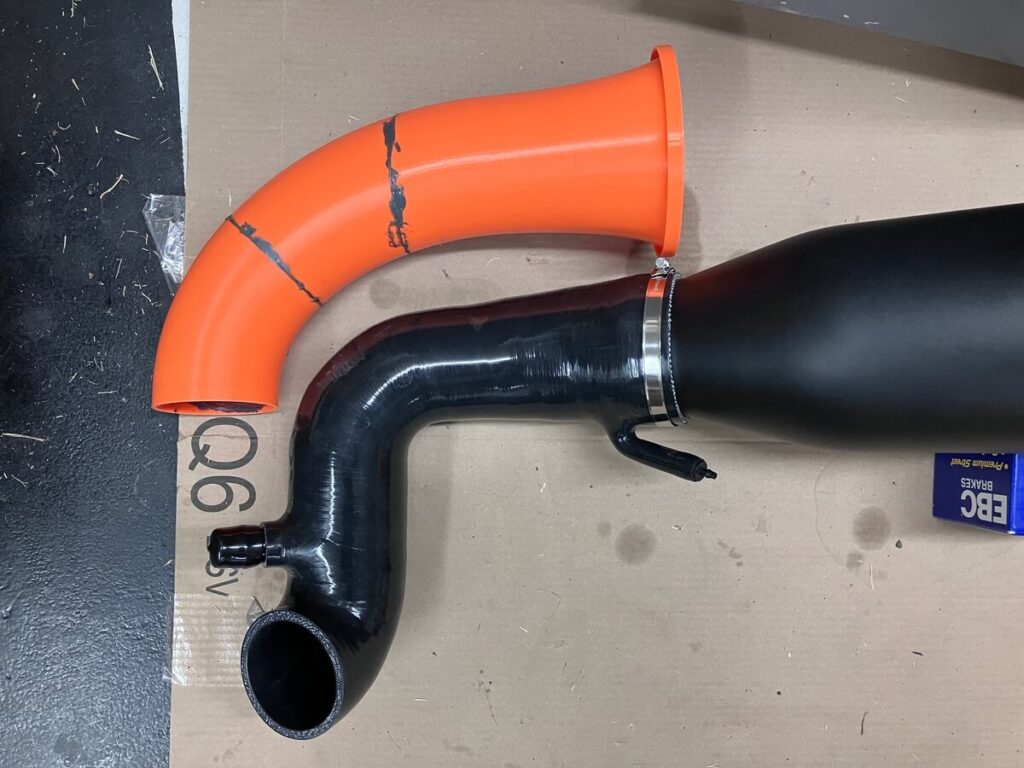
The MGM7 Beta-2 also gradually tapers from the 6″ opening to the 3.5″ outlet. The Blaze necks down after the filter housing to 3″ before the first 90-degree bend.
These factors are all speculation and I do not plan to investigate to collect better information on the cause of the Blaze intakes measures.
As a confidence check with the Blaze intake, I checked its flow rate using the stock adapter and hybrid adapter for comparison with the model I tested in 2022. The 2024 model flowed slightly less, down 5 CFM using the stock adapter and down 8 CFM using the hybrid adapter. This is a very small change that could be a result of sample-to-sample variation and provides confidence that the latest measures made using the 3″ adapter are representative of the system’s performance.
Conclusions:
The MGM7 Beta-2 intake that has been in development was flow-tested using a 3.5″ to 3″ 90-degree silicone elbow that was attached to the flow bench using a 3″ adapter.
The MGM7 intake flowed 560 CFM @ 13″ of H2O.
A commercially available intake, the Blaze ATOM Race V2 was tested similarly and flowed 344 CFM @ 13″ of H2O.
Several causes for the differences observed were hypothesized but no investigation was performed to determine the validity of these hypotheses.
